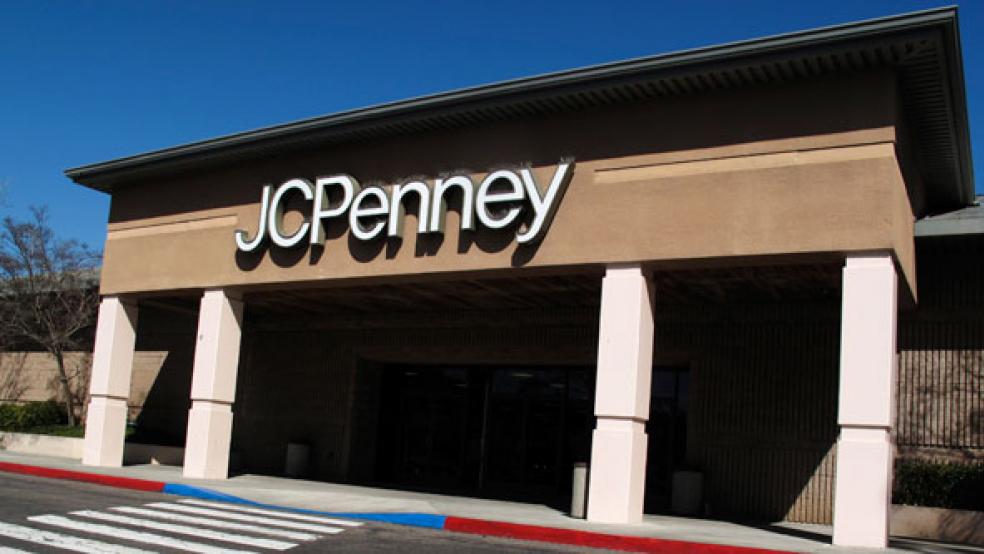J.C. Penney’s (JCP) view of the world, as laid out for analysts and investors in yesterday afternoon’s conference call, is a rather rosy one. The retailer’s transformation is “ahead of schedule,” former Apple exec and current Penney CEO Ron Johnson said. Vendors and “design partners” love the company’s new shop strategy, the management team is simplifying the company’s business model and streamlining operating teams and “merchants have stepped up to the challenge of improving our merchandise and presentation.” To top it all off, Johnson said, the stores are “gaining mindshare.”
Too bad that gaining mindshare doesn’t seem to translate into gaining sales.
As recently as Monday, analysts had expected the company to report a 12.2 percent plunge in same-store sales for the first quarter. The actual decline was even heftier: 19 percent. The size of the company’s first-quarter loss – $163 million – was twice what analysts had been projecting. By nearly any metric, the results were dismal. To make matters worse, the company axed its quarterly 20-cent dividend payment, saying it was going to hang on to the cash to help with the ongoing to turnaround.
The last factor alone should have alarm bells ringing. Companies usually abandon dividend payments only as a last resort, because it sends a poor message not only to shareholders but also to the company’s other creditors, including its banks and vendors. It would be more typical for a company not in actual financial distress to first cut the dividend – or to provide hints to analysts that this might happen down the road. Instead, the news came as much of a shock as the quarterly results themselves. The company’s version? They are generating plenty of cash, but they think that hanging on to it will generate bigger returns for shareholders later on. Now, that’s a tough sell – and indeed, J.C. Penney’s stock was trading 12 percent lower, at $29.27 a share, after the conference call ended.
Johnson, who took over as CEO in November, announced a new strategy for the venerable retailer early this year – one that involved eliminating coupons and big sales. That seems to have backfired, as consumers stayed away in droves. During the earnings conference call, one J.C. Penney executive described as “great” the fact that 21 percent of the shoppers who walked into one of the company’s stores made a purchase before walking out again. The problem? Last year, the figure was 22 percent – and the average size of that purchase has fallen 5 percent.
So, are J.C. Penney’s problems just a necessary part of a painful turnaround? After all, the company does have to change its entire customer demographic and, as its executives repeatedly noted, find a way to cure those customers of their addiction to clipping coupons. (Yes, there was use of the word “drugs” when referring to these discounts….)
It’s a big challenge, transforming a conventional department store whose customers tend to be middle-aged, middle-income and middle-class into a hodge-podge of brand-specific boutiques of the kind that Johnson envisages. Michael Francis, head of the company’s merchandising operations, rolled out a long list of brand names whose products would be showcased in the new J.C. Penney (whoops, JCP) stores. In fashion and accessories, names like Vivienne Tam, Lulu Guinness, Nanette Lepore, Jonathan Adler, Bodum, Conran. Not to mention the house brand: JCP. That, the company said, will be a bit like “Joe Fresh,” the spinoff clothing division of Canada’s Loblaw chain of grocery stores that has begun to open stand-alone boutiques in marquee locations like Manhattan’s Fifth Avenue. “We’re going to compete on fast fashion,” not towels and socks, Johnson said.
But that transformation won’t come cheaply. In addition to sacrificing the dividend, shareholders will have to reconcile themselves to the fact that the company now won’t meet its 2012 earnings target of $2.16 a share (a figure that takes into account any writedowns on existing inventory and other restructuring charges.) Nor is it likely to occur rapidly.
Investors who do decide to stick around should prepare themselves for a very bumpy ride indeed as J.C.Penney embarks on one of the most radical rebranding exercises attempted since Coca-Cola launched New Coke. We’re not suggesting that the experiment is doomed; merely that it’s highly risky, and the odds remain high that the retailer will continue to alienate its traditional shoppers while being slow to lure new ones through its doors.






